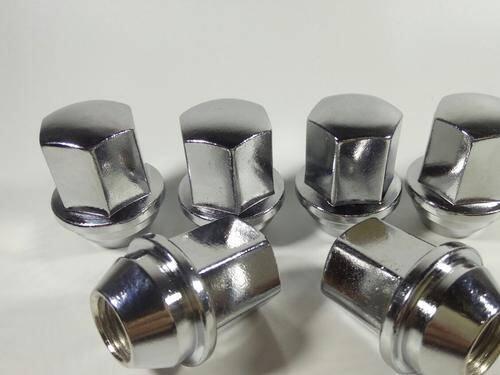First of all, let’s take a look at what tire screws are and what they do. Tire screws refer to the screws that are installed on the wheel hub and connect the wheel, the brake disc (brake drum) and the wheel hub. Its function is to reliably connect the wheels, brake discs (brake drums) and hubs together. As we all know, the weight of the car is ultimately borne by the wheels, so the connection between the wheels and the body is achieved through these screws. Therefore, these tire screws actually bear the weight of the whole car, and also transmit the torque output from the gearbox to the wheels, which are subject to the dual action of tension and shear force at the same time.

The structure of the tire screw is very simple, which is composed of a screw, a nut and a washer. According to the different screw structures, it can also be divided into single-headed bolts and double-headed bolts. Most of the current cars are single-headed bolts, and stud bolts are generally used on small and medium-sized trucks. There are two installation methods for single-head bolts. One is hub bolt + nut. The bolt is fixed on the hub with an interference fit, and then the wheel is fixed by the nut. Generally, Japanese and Korean cars are widely used, and most trucks also use it. this way. The advantage of this method is that the wheel is easier to locate, the disassembly and assembly of the wheel is easier, and the safety is higher. The disadvantage is that the replacement of tire screws is more troublesome, and some need to disassemble the wheel hub; The tire screw is directly screwed on the wheel hub, which is generally used in European and American small cars. The advantage of this method is that it is easier to disassemble and replace the tire screws. The disadvantage is that the safety is slightly worse. If the tire screws are repeatedly disassembled and installed, the threads on the hub will be damaged, so the hub must be replaced.
Car tire screws are generally made of high-strength steel. The strength grade of the screw is printed on the head of the tire screw. There are 8.8, 10.9, and 12.9. The larger the value, the higher the strength. Here, 8.8, 10.9, and 12.9 refer to the performance grade label of the bolt, which consists of two numbers, which respectively represent the nominal tensile strength value and yield ratio of the bolt material, generally expressed by “X.Y”, such as 4.8, 8.8, 10.9, 12.9 and so on. The tensile strength of bolts with performance grade 8.8 is 800MPa, the yield ratio is 0.8, and the yield strength is 800×0.8=640MPa; the tensile strength of bolts with performance grade 10.9 is 1000MPa, the yield ratio is 0.9, and the yield strength is 1000×0.9= 900MPa
Others and so on. Generally, the strength of 8.8 and above, the bolt material is low carbon alloy steel or medium carbon steel, and heat treatment is called high strength bolt. The tire screws of the car are all high-strength bolts. Different models and different loads have different matching bolt strengths. 10.9 is the most common, 8.8 is generally matched to lower-end models, and 12.9 is generally matched to heavy trucks. superior.


Post time: May-20-2022

